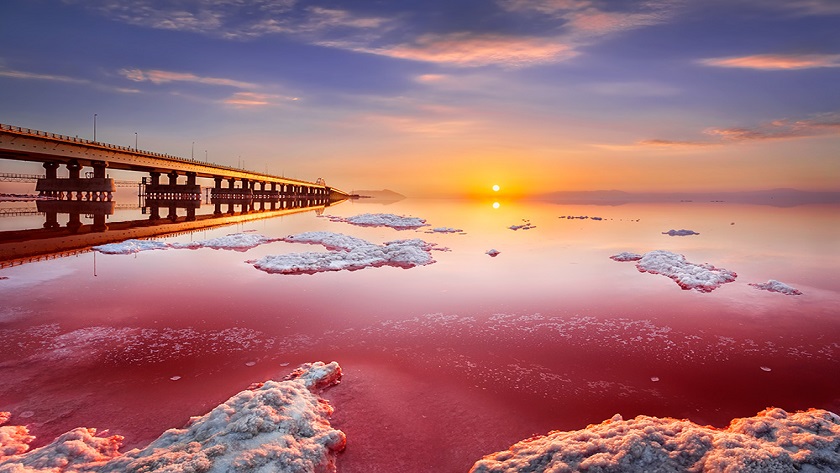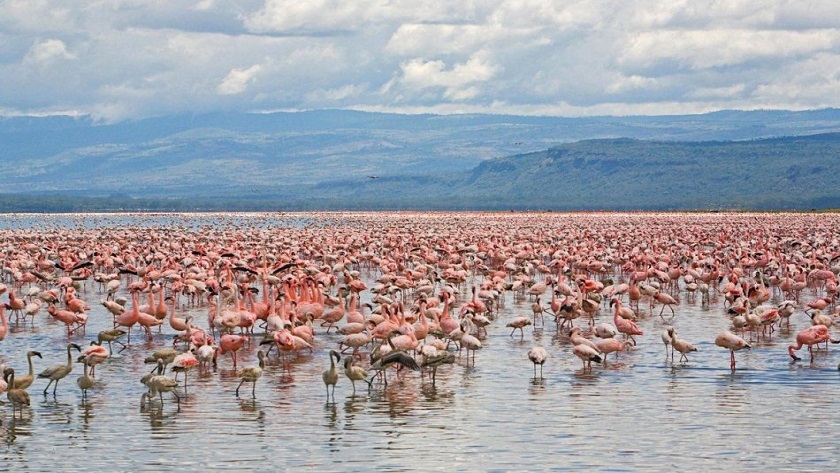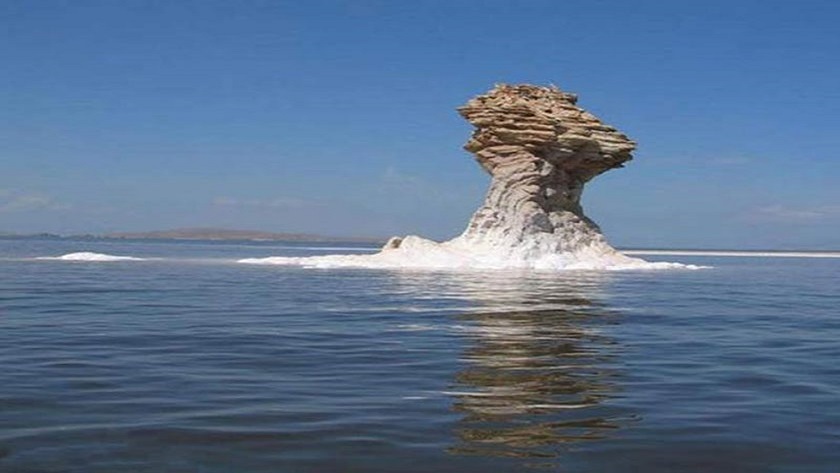Iran Press/ Iran News: Revered by Iranians as “the turquoise solitaire of Azerbaijan province,” Lake Urmia was second only to the Caspian Sea as the largest saltwater lake in the Middle East, a haven for birds and plants.
 An islet in Lake Urmia
An islet in Lake Urmia
Geographical Features
Lake Urmia is an endorheic salt lake in Iranian Azerbaijan, Iran and near Iran's border with Turkey. The lake is between the provinces of East Azerbaijan and West Azerbaijan in Iran, and west of the southern portion of the Caspian Sea. At its full size, it was the largest lake in the Middle East and the sixth-largest saltwater lake on Earth with a surface area of approximately 5,200 km2, 140 km long, 55 km wide, and 16 m deep. The lake has shrunk significantly due to damming of the rivers that flow into it and the pumping of groundwater from the area.
Related news: Lake Urmia has many opportunities, resources: Japaneses Amb.
 Lake Urmia is among the most beautiful salt lakes in world
Lake Urmia is among the most beautiful salt lakes in world
The governing factor of Lake Urmia’s hydrography is its lack of an outlet. It forms the dead end of a large drainage system that covers an area of about 20,000 square miles (52,000 square km) and is subject to great seasonal variation. The main affluents are the Talkheh River in the northeast, which gathers the melted snows from the Sabalan and Sahand massifs, and the twin rivers Zarineh and Simineh (Tatavi) in the south.
 Sunset at Lake Urmia; crimson water is due to algae and bacteria in high salinity conditions
Sunset at Lake Urmia; crimson water is due to algae and bacteria in high salinity conditions
Lake Urmia biosphere:
Because Lake Urmia’s waters have no outlet, they are highly saline. The lake is one-fourth as salty as the Dead Sea, with a salt content ranging from 8 to 11 percent in the spring to 26 or 28 percent in the late autumn. The main salts are chlorine, sodium, and sulfates.
 Lake Urmia hosts red flamingos
Lake Urmia hosts red flamingos
Organic life in the lake’s waters is limited to a few salt-tolerant species. Copious algae provide food for brine shrimp and cause a bad smell along the lake’s shores. There are breeding populations of sheldrake, flamingo, and pelican, as well as migratory birds.

Considering the role of Artemia in Urmia Lake, the Iranian Fisheries Research Organization (IFRO) established the Artemia Research Center in Urmia in 2000. On the basis of the vital role of Artemia as live food in aquaculture, this center operates through various departments including Hydrochemistry, Stock Assessment, Culturing of Artemia and Algae species, Aquatic Diseases Hygiene.
Related news: Lake Urmia; biggest lake in West Asia turns blood red
Every year, the color of Lake Urmia turns red in autumn due to the presence of algae and bacteria in high salinity conditions.
 Lake Urmia is rich in Artemia, a species of brine shrimp
Lake Urmia is rich in Artemia, a species of brine shrimp
Lake Urmia preservation
Lake Urmia futurology center opened with the aim of using scientific and technical capacities at the local, national, and international levels, facilitation, and coordination between departments, presenting and expanding successful models of coexistence with Lake Urmia and sustainable use of its resources with public participation, raising awareness of all stakeholders about their environmental rights and responsibilities and increasing public sensitivity and participation.
 Lake Urmia faces drought as preservation programs continue
Lake Urmia faces drought as preservation programs continue
Tourist attraction
As the second saltwater lake in the world, Lake Urmia is one of the tourism hubs in West Azerbaijan province.
In 1978, UNESCO registered Lake Urmia and its ecosystem among the world’s natural and protected monuments.
 Bridge on lake Urmia
Bridge on lake Urmia
As Lake Urmia is near the capital of West Azarbaijan province, you can visit attractions like Urmia Museum, Urmia Grand Bazaar, and Takht-e Soleyman. Also, you can visit Tabriz attractions like Azarbaijan Museum, Mausoleum of Poets, Amand Tourism Complex, and Eynali.
Read More:
Negative impacts of drought on tourism in Iran's West Azerbaijan Province
Ashkan Salehian

